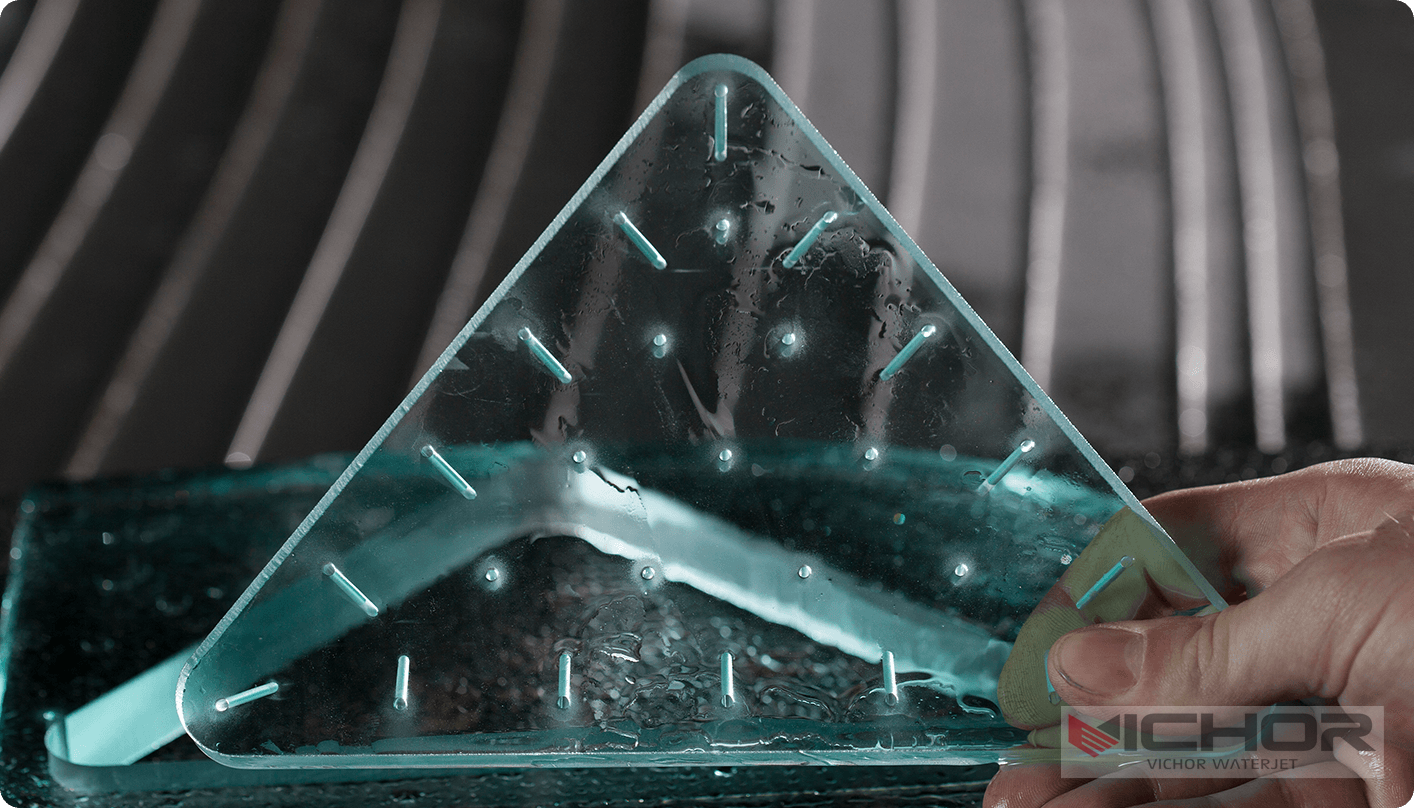
Water Cutting Steel Plate: The Ultimate Guide to Cold, Precision Cutting
In the world of industrial fabrication and metalworking, cutting through thick, durable materials like steel plate has always been a challenge defined by heat, force, and wear. Traditional methods like plasma, laser, or oxy-fuel cutting bring intense heat to the equation, often compromising the material’s structure. However, a technology has been steadily revolutionizing workshops and factories worldwide: water cutting steel plate. Also known accurately as abrasive waterjet cutting, this process offers a unique and powerful alternative. This article delves deep into how water cutting steel plate works, its profound benefits, and why it might be the perfect solution for your next project.
How It Works: The Science of Harnessing Water for Steel
At its core, the process of water cutting steel plate is a breathtaking display of focused energy. It begins with a high-pressure pump, often intensifier-based, that pressurizes ordinary water to an extreme level—typically between 60,000 and 90,000 PSI. This ultra-high-pressure water is then forced through a tiny orifice, usually made of sapphire or diamond, creating a supersonic stream of water.
For cutting soft materials like foam or rubber, this pure waterjet is sufficient. But for a task as demanding as water cutting steel plate, an abrasive agent is introduced into the stream. The pressurized water jet is sent into a mixing tube, often called a focuser, where it creates a vacuum that pulls in a precisely measured amount of a hard abrasive garnet sand. The water stream accelerates these abrasive particles, creating an erosive jet that cuts through the steel plate by grinding away microscopic particles at an incredibly fast rate. This combination of extreme water pressure and abrasive entrainment transforms a simple stream of water into the most versatile cutting tool available.
The Unmatched Advantage: A Cold Cutting Process
The single most significant advantage of using a waterjet for cutting steel plate is that it is a cold process. Unlike thermal cutting methods, the waterjet does not generate significant heat in the material.
Eliminates Heat-Affected Zone (HAZ): Plasma, laser, and flame cutting generate intense heat that alters the metallurgical properties of the steel along the cut edge. This Heat-Affected Zone (HAZ) can make the steel brittle, cause hardening, or induce thermal stress and warping. Since water cutting steel plate is a mechanical erosion process, it leaves the material’s inherent structure completely unchanged. The edge remains cool to the touch immediately after cutting, preserving the steel’s original temper, hardness, and integrity.
Prevents Warping and Distortion: The absence of heat is a game-changer for cutting thin steel plates. Thermal processes can easily warp thin materials, ruining the part and requiring costly straightening or becoming scrap. Water cutting steel plate applies minimal lateral force and no thermal stress, allowing for the distortion-free cutting of even the thinnest gauges.
Unparalleled Precision and Versatility in Cutting
When it comes to complexity and material range, water cutting steel plate is virtually unmatched.
Extreme Precision: Modern abrasive waterjet systems are CNC-controlled, allowing for incredible accuracy, often within a tolerance of ±0.001 inches (±0.025 mm). They can produce intricate shapes, sharp corners, and complex geometries that would be impossible or prohibitively expensive with other methods. This makes it ideal for creating custom parts, prototypes, and artistic designs directly from steel plate.
Material Versatility: This is where the waterjet truly shines. The same machine that cuts through 6-inch thick stainless steel plate can also cut aluminum, titanium, brass, copper, stone, glass, ceramics, and composites. For a fabricator working with multiple materials, a waterjet is a single-source solution, eliminating the need for multiple dedicated cutting machines.
Capabilities and Thickness: How Thick Can It Go?
A common question in fabrication is about the limits of water cutting steel plate in terms of thickness. While the exact maximum thickness depends on the pump pressure, abrasive quality, and desired cut speed, standard industrial systems can typically cut through mild steel plate up to 8 inches (200 mm) thick and harder alloys like titanium or tool steel up to 4-6 inches (100-150 mm). The cutting speed will decrease as thickness increases to maintain edge quality, but the capability is there. This makes it a viable option for nearly any plate thickness encountered in general and heavy fabrication.
Evaluating the Edge Quality and Finish
The edge quality produced by water cutting steel plate is unique. It is not a melted and re-solidified edge like from a plasma cutter, nor is it a sheared edge like from a punch press. Instead, it has a matte, satin-like finish with a slight texture—a characteristic “grit blast” appearance from the abrasive action.
It’s important to note that the cut edge has a taper; it is slightly wider at the top than at the bottom. However, advanced systems use specialized software and cutting heads that can dynamically compensate for this taper, producing near-perpendicular edges. For many applications, the as-cut edge is acceptable. For others requiring a perfectly smooth finish, the waterjet cut part can be easily machined or finished as a secondary operation, with the waterjet providing a highly accurate near-net-shape part.
Why Choose Water Cutting for Your Steel Plate Projects?
Choosing water cutting steel plate is an investment in quality, flexibility, and efficiency. Here’s a summary of why it might be the right choice:
No Thermal Stress: Perfect for sensitive materials and thin plates.
Material Flexibility: One machine for almost every material in your shop.
High Precision: Capable of producing extremely complex and accurate parts.
Environmentally Friendly: The process generates no hazardous fumes or vapors. The used abrasive and steel slag are non-toxic and can often be recycled or disposed of easily.
Ready for Automation: CNC integration allows for unattended operation, nesting parts to minimize material waste and maximize productivity.
Water cutting steel plate is far more than just a niche technology; it is a foundational tool in modern manufacturing. Its ability to cut with cold, brutal force and delicate precision has solved countless engineering challenges. Whether you are a heavy equipment manufacturer needing to cut thick armor plate or an artist crafting intricate steel sculptures, the waterjet provides a solution that protects the material’s properties while unleashing limitless design potential. As technology advances, making the process faster and even more accurate, its role in shaping the future of fabrication is undoubtedly secure.
continue reading



